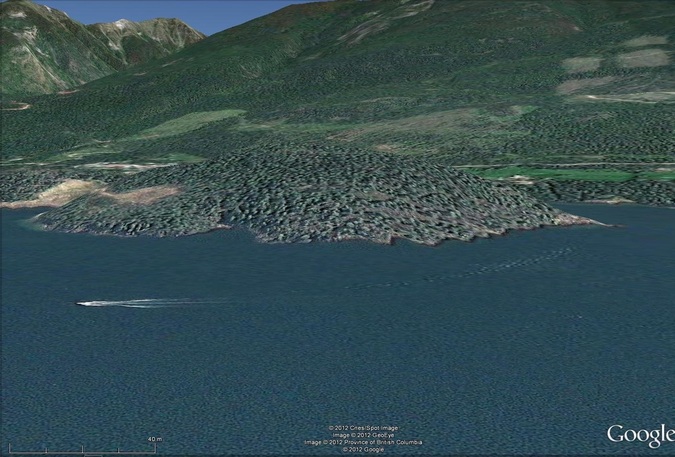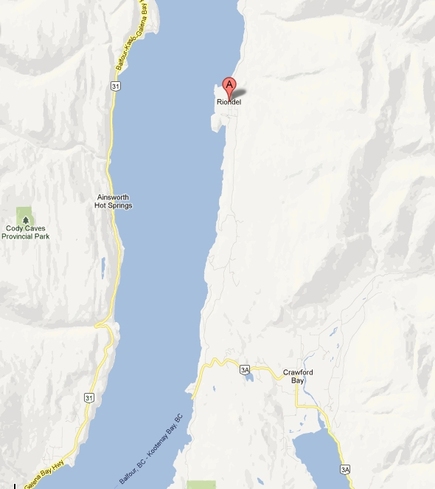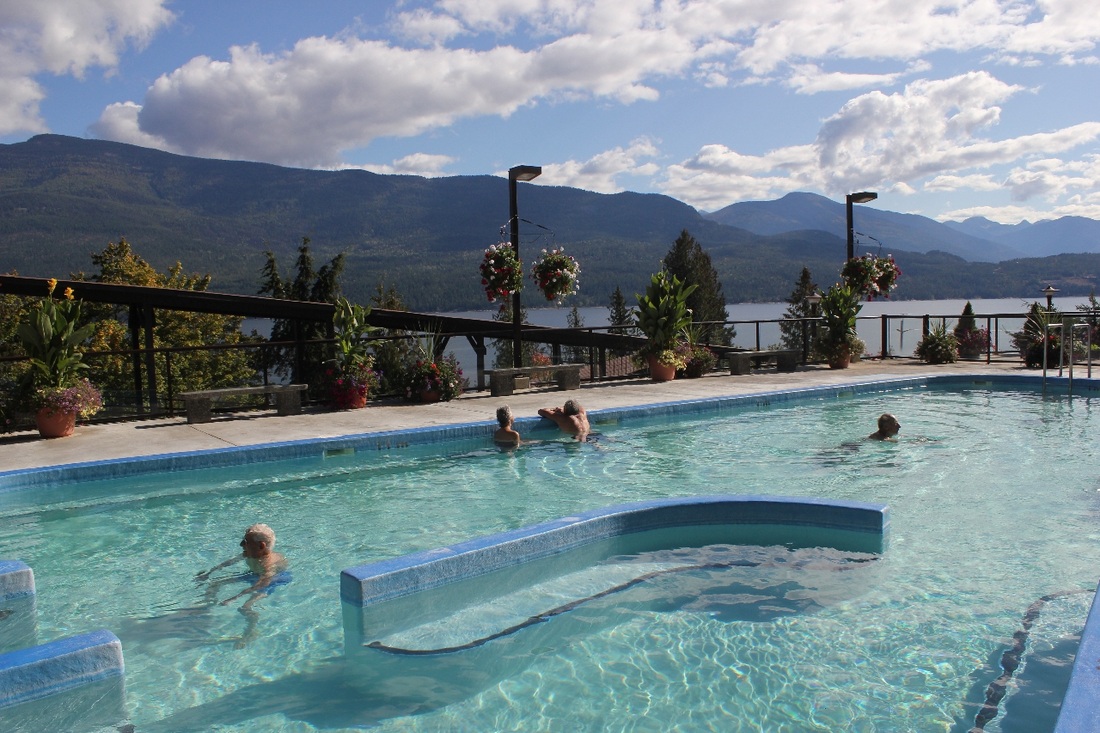
Big Ledge, just outside present day, Riondel, is the nickname given to the ledge of rock (or promontory) that conspicuously sticks out into Kootenay Lake about two-thirds of the way up from its southern extremity. A series of hills fills this promontory rising to about 100 metres from lake level. Historically this “ledge” could also be recognized by the prominent brown stains on its rock outcrop. A century of mining activity has pretty much put an end to that identifier however
Although Big Ledge was long known to the aboriginal people of the area, it took till the early 1800s before it came to the attention of white folk. And this mostly, just in passing. From the beginning, people understood this promontory might be good place to extract lead--for making bullets, for example. But it was a damned difficult place to get to. And with no infrastructure anywhere nearby, no one could see any way to turn this knowledge into a money-making venture.
The situation changed dramatically with the advent of the railway. By 1882, trains were pulling into Sandpoint, Idaho, not far from the Canadian border and the south shore of Kootenay Lake. By this date, plans were already underway for the great Canadian Pacific as well (though it would not pass nearly so close to Big Ledge). And one John C. Ainsworth of Oakland California was proposing to build a short spur line to link Kootenay Lake to the Columbia River as a means of moving ore, supplies and people. Suddenly Big Ledge, and the lead and silver buried in its rocks, had become accessible.

It is between these two points, separated by just four miles of water, that the core of my story takes place, with Thomas Hammill and his boys, based at the hot springs, and Sproule and his confederates holed up on the promontory. These were marvelous, magical places back then and remain so today, and like two terminals in a battery, a whole lot of electricity flowed between them.

